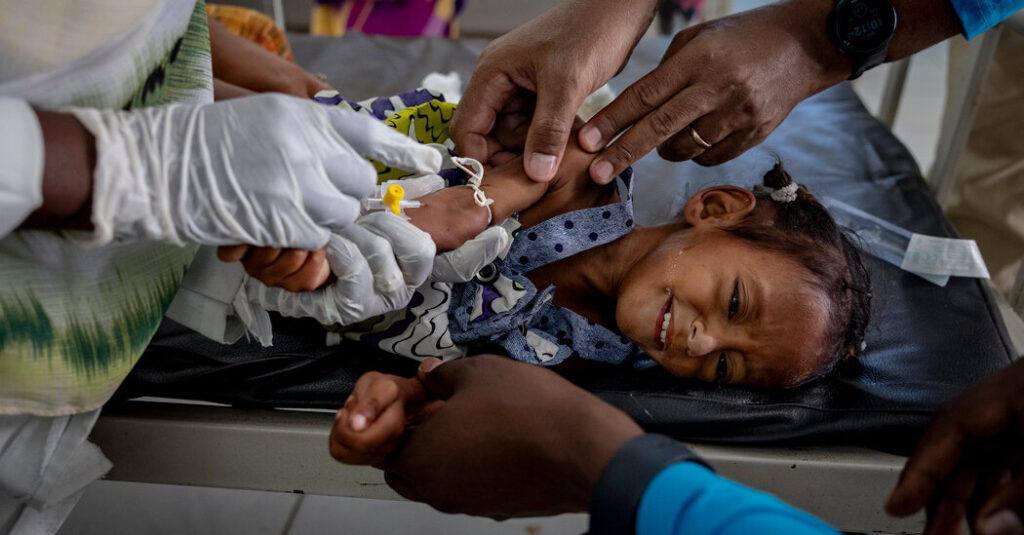At least 750,000 people in Sudan are on the brink of starvation and death, the global hunger authority said on Thursday, as a devastating civil war leaves more than half of the country’s 48 million people chronically hungry.
According to the latest data from the Integrated Food Security Phase Classification, at least 14 areas across the country are close to famine, including some areas in the capital Khartoum. conditions and officially declared a famine.
The horrific latest news appears to confirm warnings from aid experts that Sudan is slipping into a humanitarian disaster not seen in decades.
“This could be the crisis of a generation,” said Edvard Rodier, European director of the Norwegian Refugee Council, who was in western Sudan last week. “I’ve never seen anything like this.”
The organization said in a report released on Thursday that 25.6 million Sudanese, or more than half of the country’s population, are in food crisis. Of these, 8.5 million are severely malnourished or struggling to survive, while 755,000 are in “catastrophe” – essentially famine.
When the group, known as the IPC, last released estimates for Sudan in December, the number of people facing catastrophic food insecurity was zero. The latest figures even surpass those in Gaza, where the group said on Tuesday that 495,000 people were in the same situation.
Even so, the organization has not officially declared a famine in Sudan, in part because of the difficulty in obtaining reliable data. Sudan’s health system is collapsing due to intense fighting and restrictions imposed by the warring parties, preventing aid workers from reaching the worst-affected areas.
Still, few experts doubt mass deaths have occurred, and the situation could worsen rapidly in the coming months. Back in February, a senior UN official warned the Security Council that 222,000 Sudanese children could die in the coming months.
A recent study by the Clingendael Institute, a Dutch research group, estimated that as many as 2.5 million people in Sudan could die from hunger-related causes by October.
“We may not see famine declarations, but there is no doubt that the scale of the hunger crisis is unprecedented in 40 years or more and will kill hundreds of thousands of Sudanese people,” said Alec, a famine scholar at the institute. Alex de Waal said.
At least 9 million Sudanese have been displaced since fighting broke out in April 2023. The U.S. envoy to Sudan, Tom Perriello, estimated that the death toll could be as high as 150,000, although he added that it was impossible to obtain an accurate figure.
Areas most at risk of famine include the western Darfur region, where a major city is under siege and there are fears of massacres; the capital Khartoum; and the peninsula state, the country’s breadbasket, the IPC said.
“This is the largest humanitarian crisis on earth,” USAID Administrator Samantha Power told reporters on June 14.
Ms. Bowles and other U.S. officials have repeatedly accused the war’s belligerents — the Sudanese national army and the powerful paramilitary group Rapid Support Forces — of using starvation as a weapon of war.
Foreign sponsors fueling the fighting are also under scrutiny, particularly the United Arab Emirates, which supports the Rapid Support Forces, and Iran, which supplies drones to the military.
Yet despite the growing scale of the crisis, Sudan’s war has failed to attract the same high-level attention as the crisis in Darfur two decades ago, when Sudan became a major focus of the White House and celebrities such as movie star George Clooney.
The United Nations says it has received 17% of the $2.7 billion requested for Sudan.
“World leaders continue to go through the motions and express concern about the crisis in Sudan,” said Tjada D’Oyen McKenna, director of global aid organization Mercy Corps. “Yet they failed to respond to the situation.”

